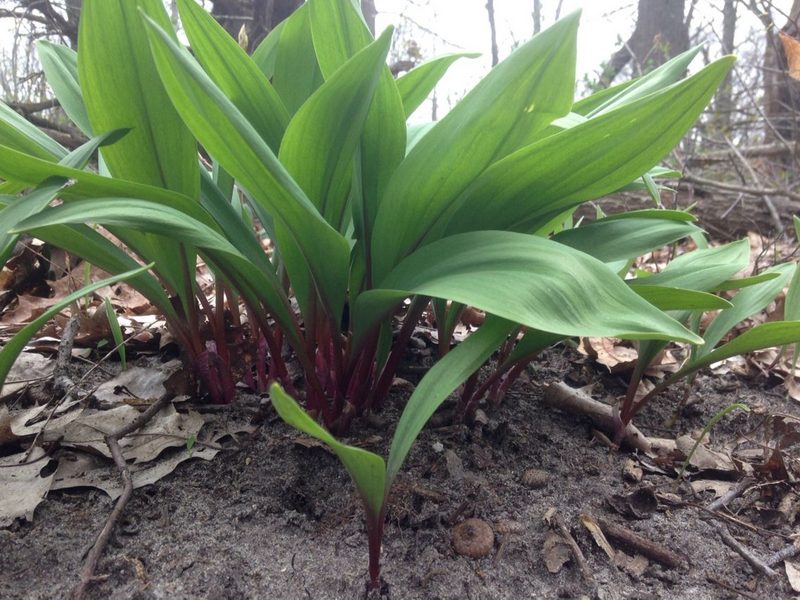Ramps
Allium tricoccum
Click here to download a PDF of this plant information page (for printing).

Sun Exposure: Shade
Season of Interest: Spring
Bloom Time: June
Bloom Color: White (insignificant)
Height: 6 to 12 in.
Spread: 12 in.
Spacing: 16 in.
Water Needs: Average
Maintenance: Mulch with leaves
Soil Type: Moist, high in organic matter
Soil pH: Acidic
Soil Drainage: Well drained
Pests: None
Diseases: None
Wildlife: Bees

Description:
Ramps have a flavor that blends spring onions and garlic. They are delicious eaten on their own, or can be used to flavor other dishes. The leaves, stems, and bulbs can all be blanched, fried, or chopped and mixed into dishes from pancakes to meatloaf.
Ramps are a native plant found growing in moist woodlands along the Appalachian mountain range in eastern North America. They begin growth from a small bulb and spread and colonize over time. The leaves emerge in early spring, but the plants are ephemeral, disappearing within a month or two and remaining dormant until the following spring. Their leaves have an elongated oval shape that tapers to a point. For more information see:
plants.ces.ncsu.edu/plants/allium-tricoccum
Care and Growing Tips:
Ramps grow naturally under a forest canopy of beech, birch, maple, poplar, hickory, and oak. A forested area with any of these trees present provides an ideal location for planting a ramp crop. If there is not a wooded area available, any structure providing ample shade will work.
Choose a well-drained site with rich, moist soil high in organic matter. Soil moisture is an important environmental variable. Keep in mind that the growth period for ramps is limited to only a few weeks in the spring, during which time the plant is dependent on having adequate light, moisture, and nutrients for survival. Hardwood leaves provide the best mulch for ramps. Poor results have been obtained with pine bark and commercial mulches so they should be avoided. In addition to maintaining moisture levels, mulching helps to suppress weeds as well as protect newly sown seeds and seedlings from wildlife.
Ramps form extensive colonies or clumps. Methods for harvest include harvesting just the young leaves, digging all the bulbs in a patch, harvesting bulbs from a portion of a patch, or thinning out a dense stand by harvesting just the largest plants. Do not harvest the bulbs until the plants have filled the area. then only harvest 10% of the bulbs each year. Harvesting just the foliage and leaving the bulb to regrow year after year is the preferred method. Remove only one leaf per plant near the end of the growth period.